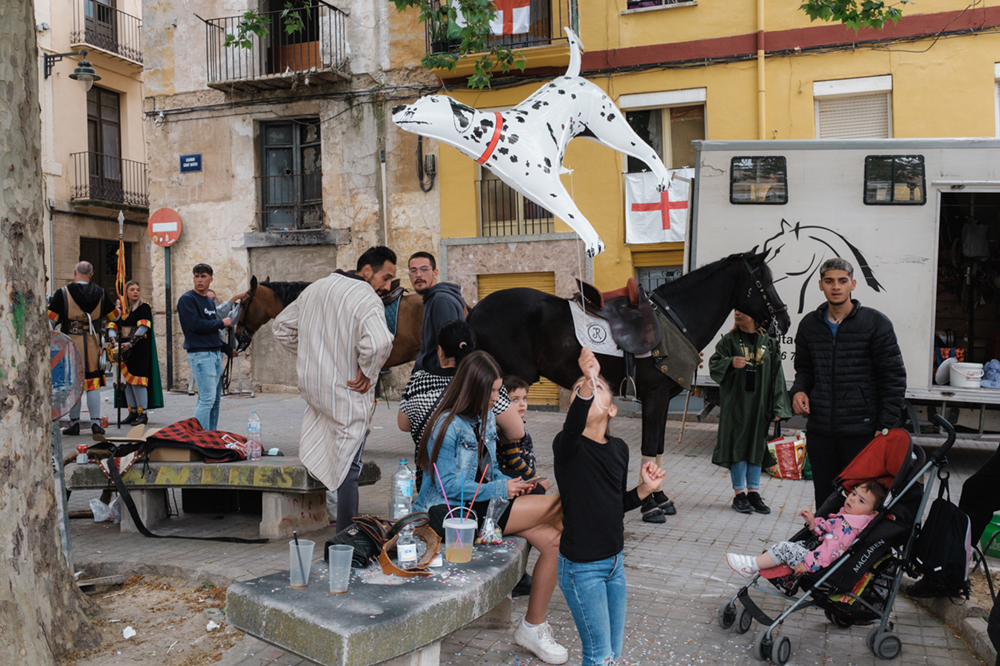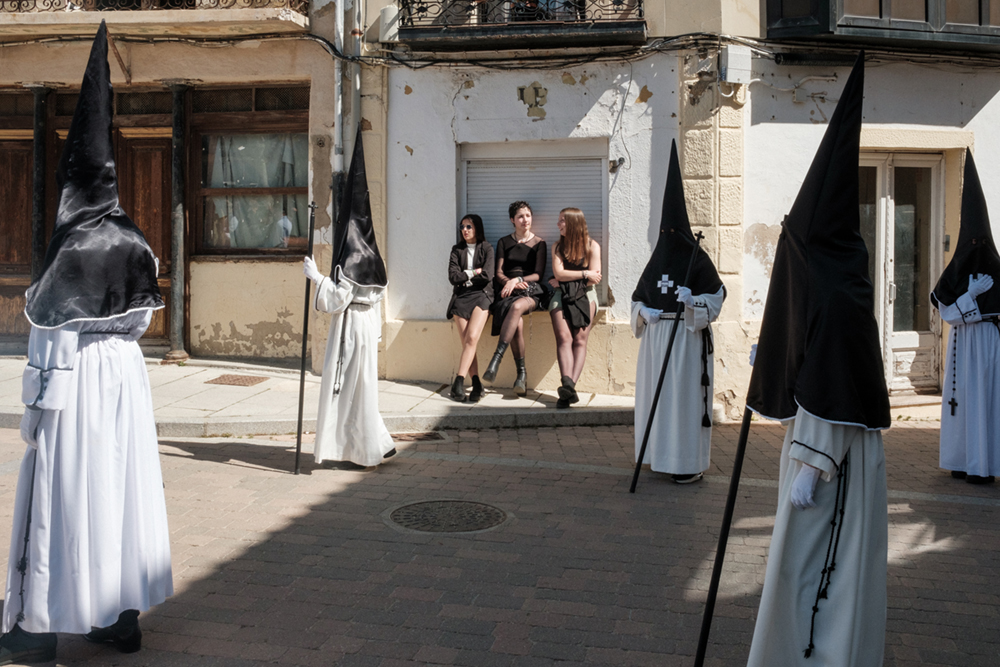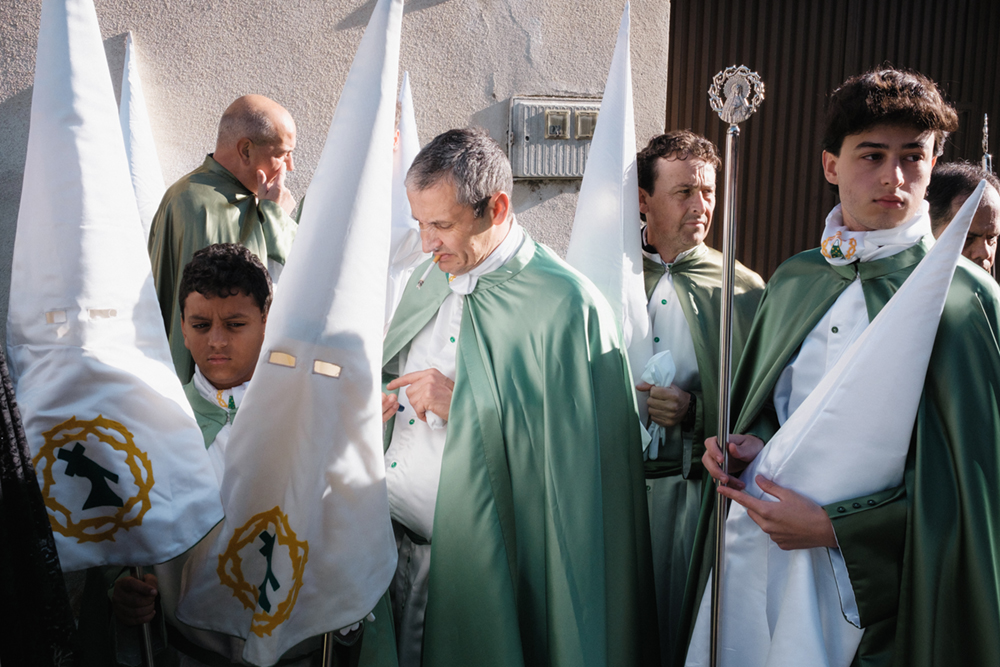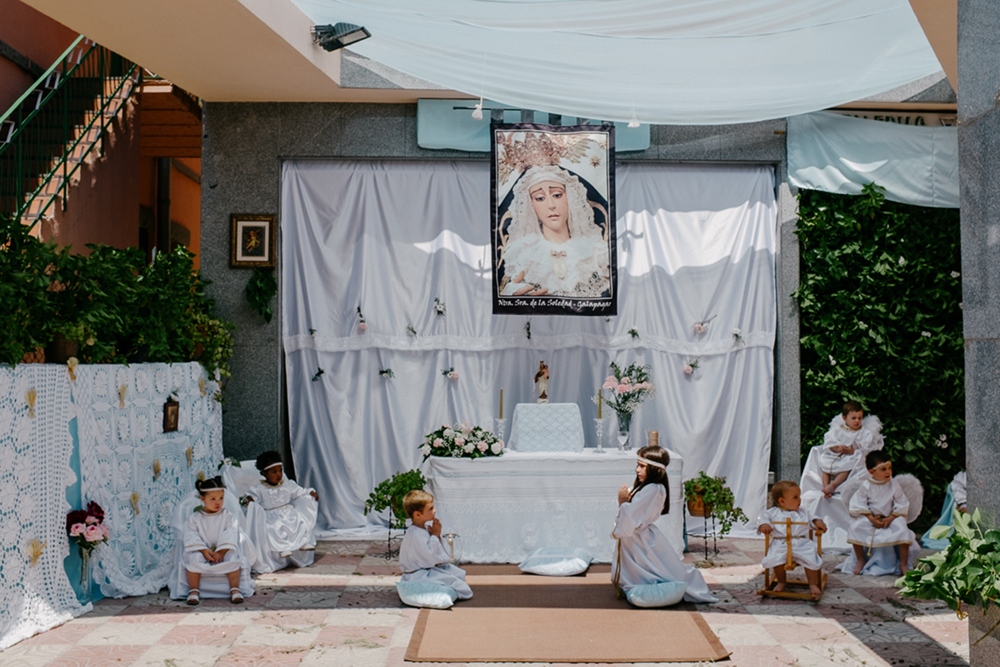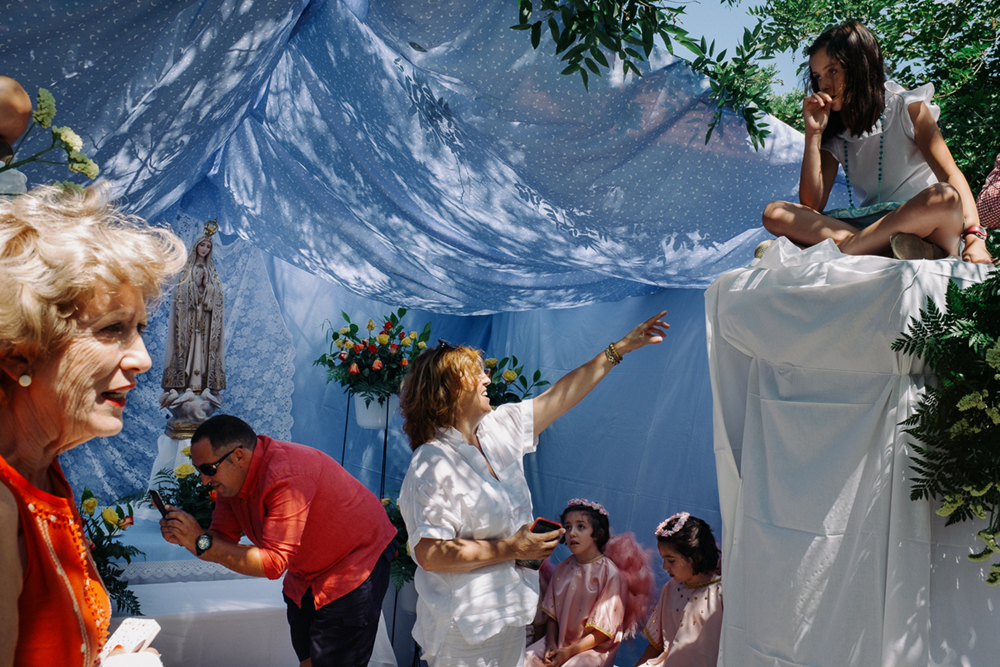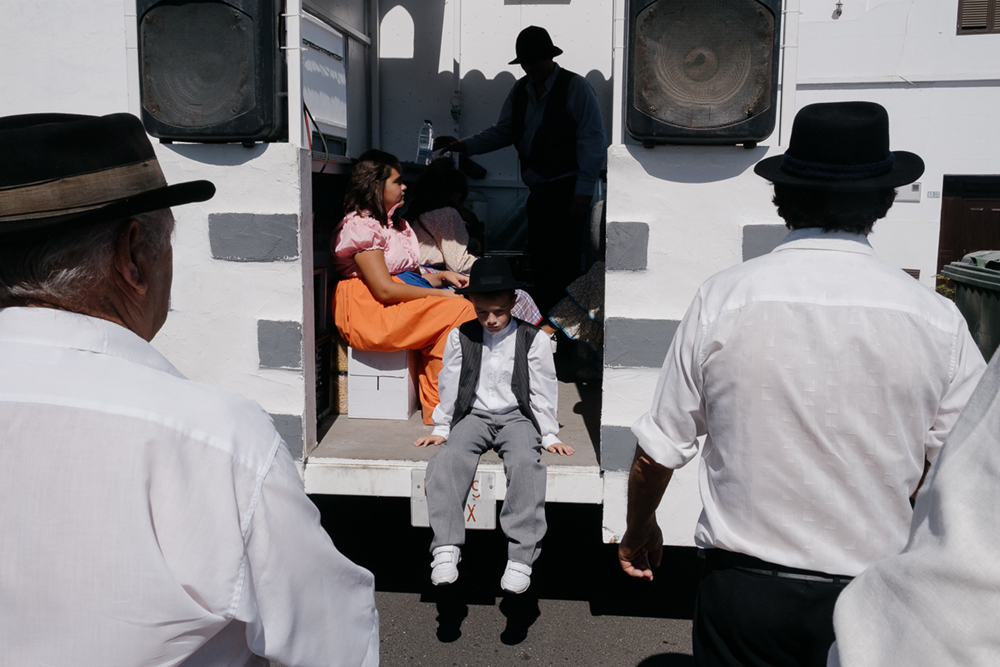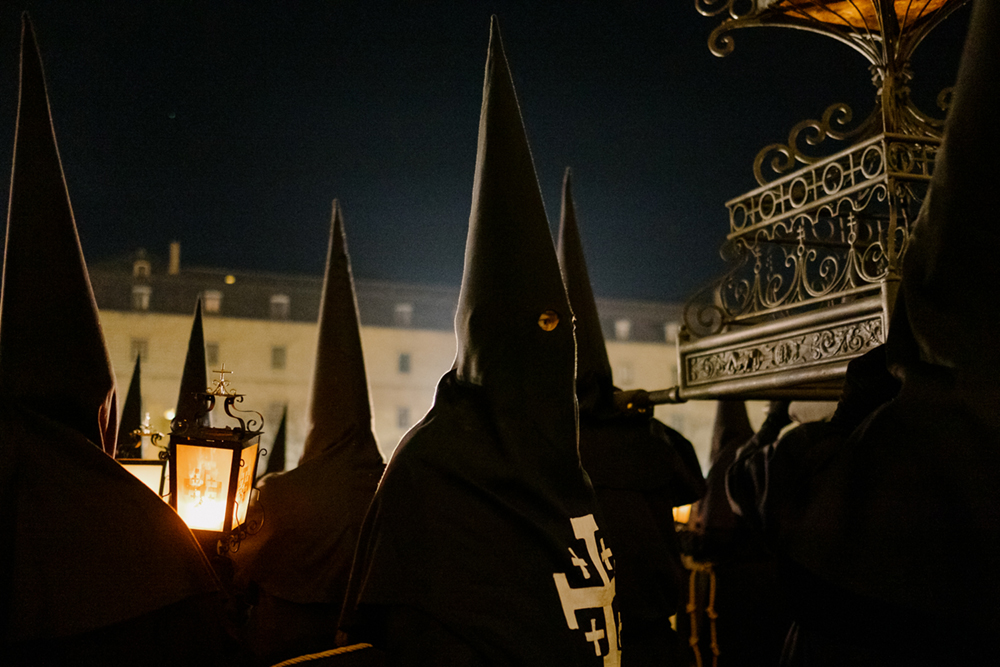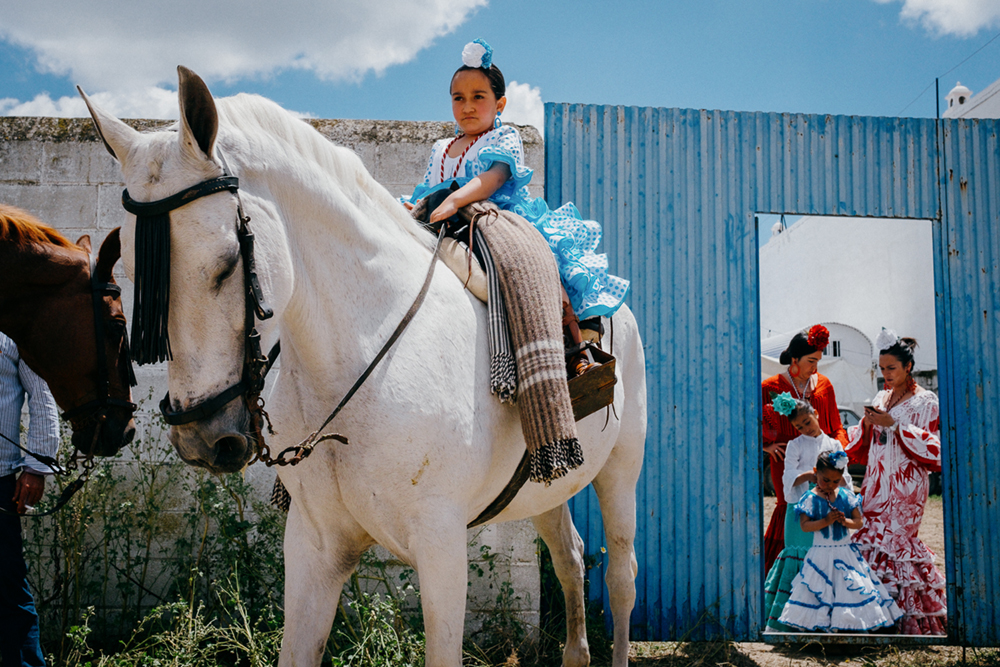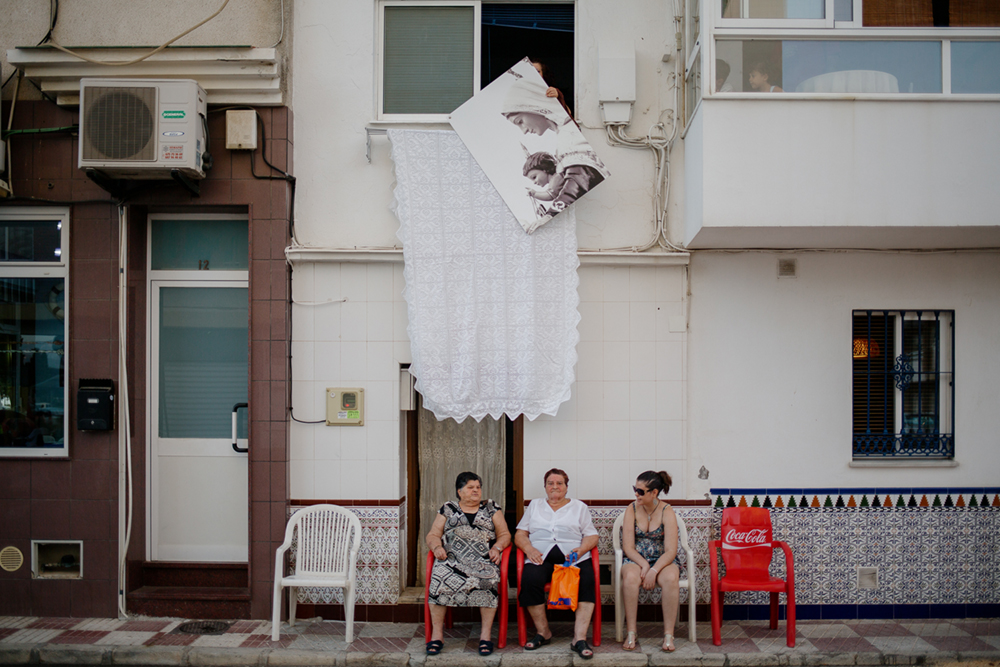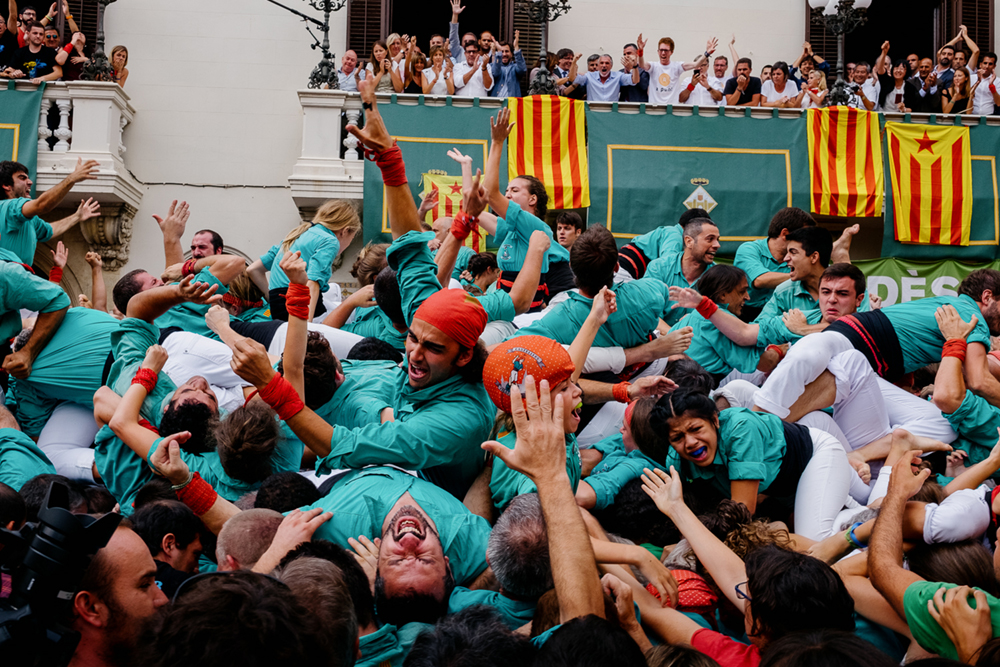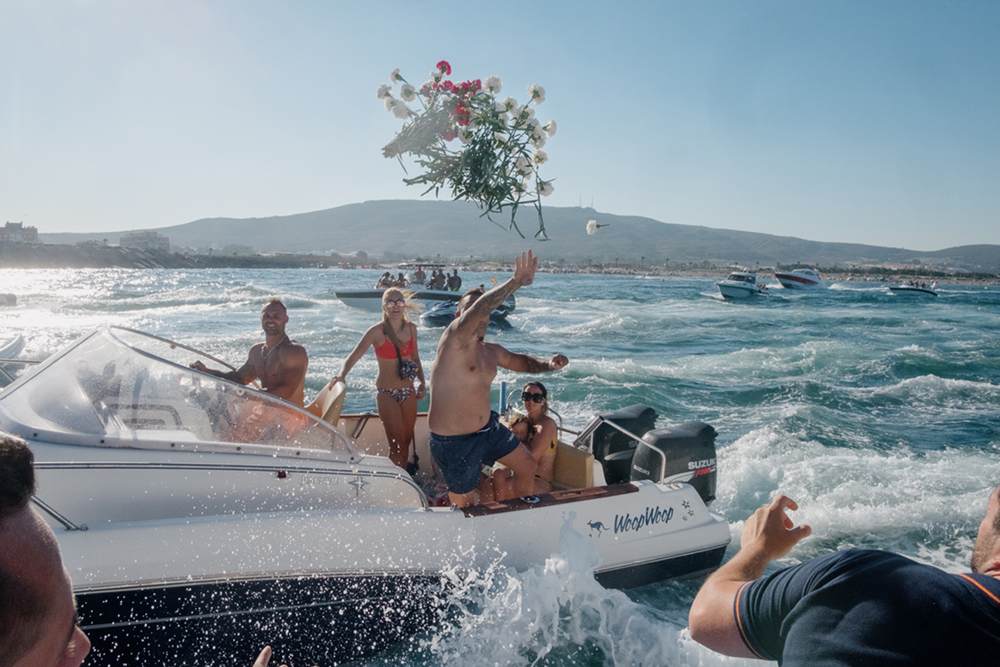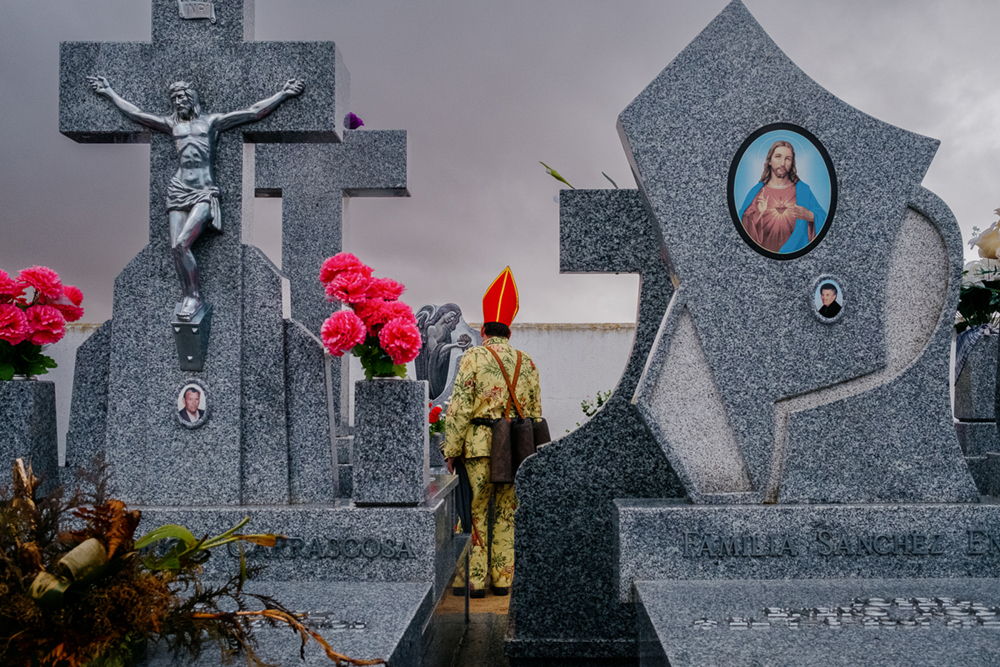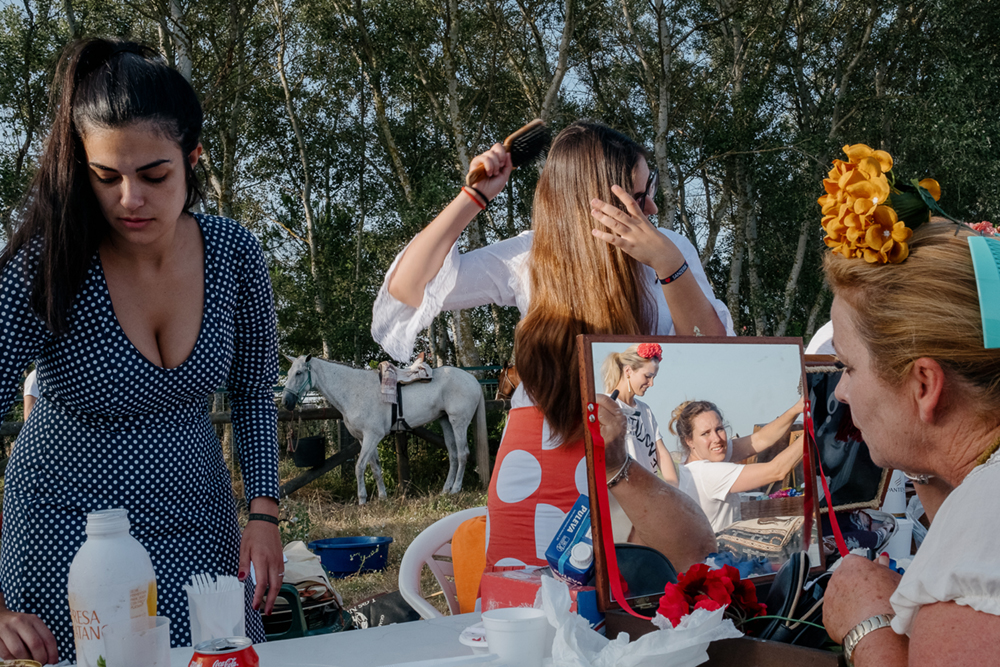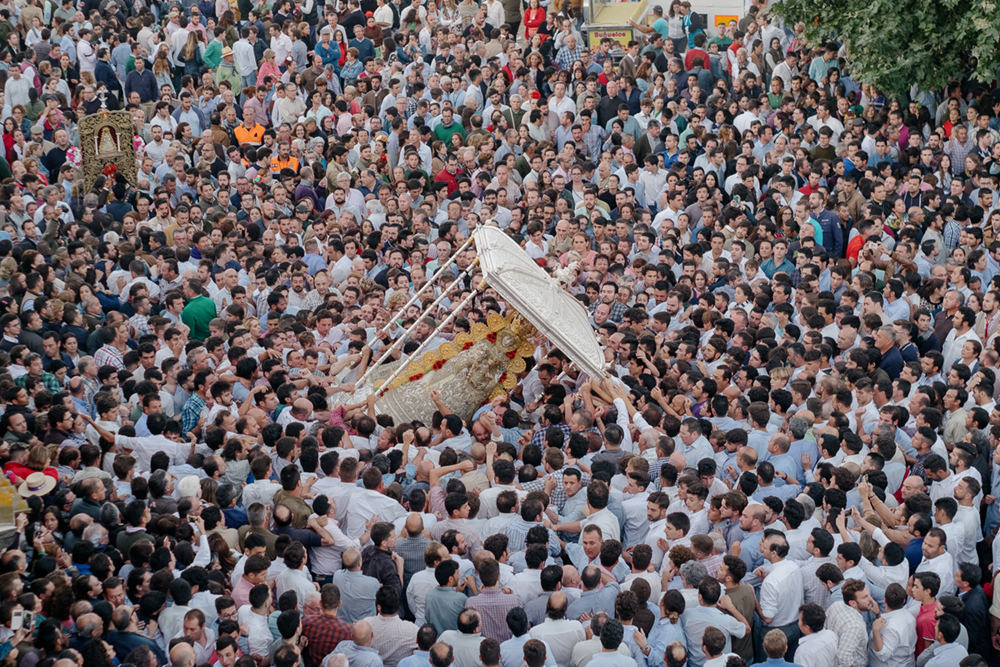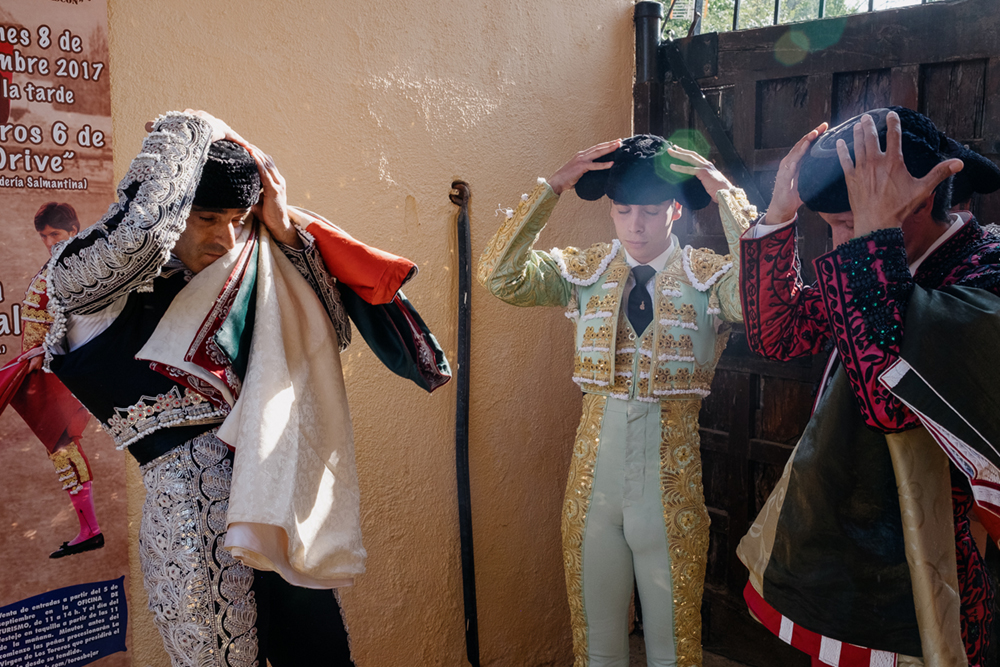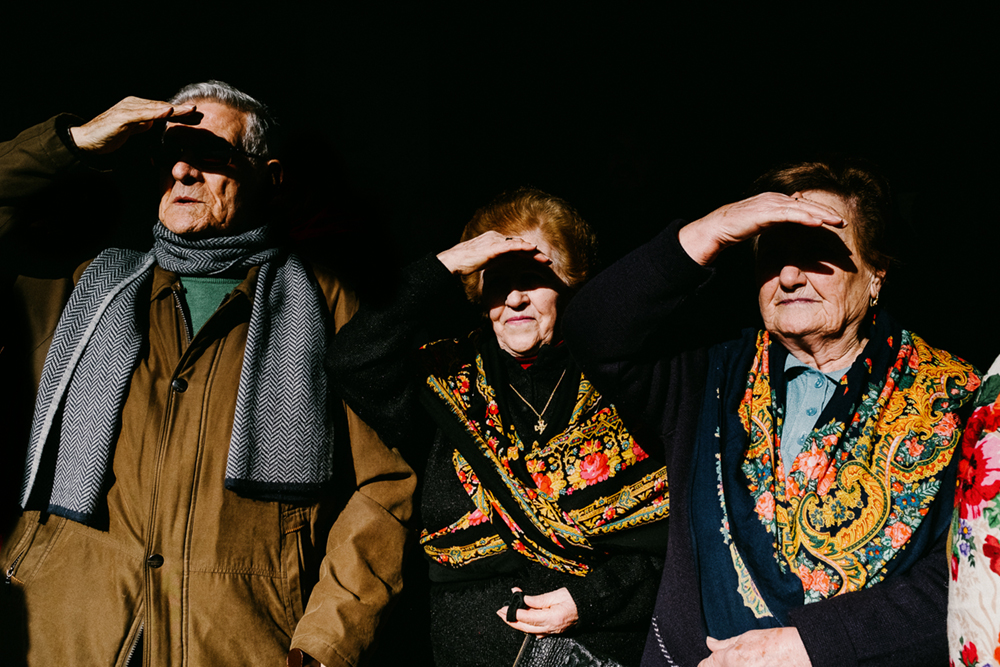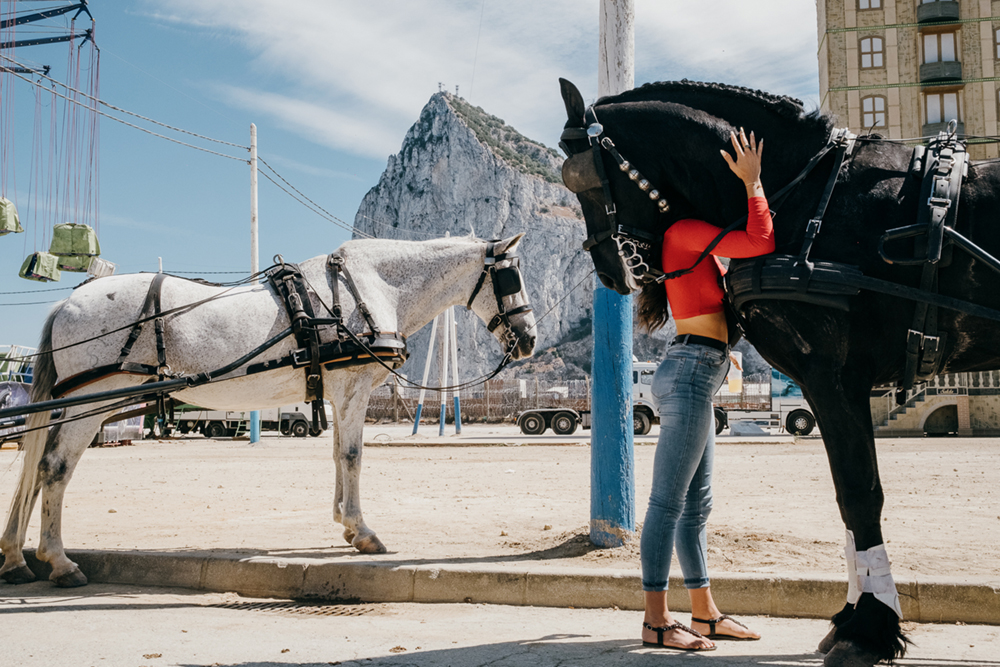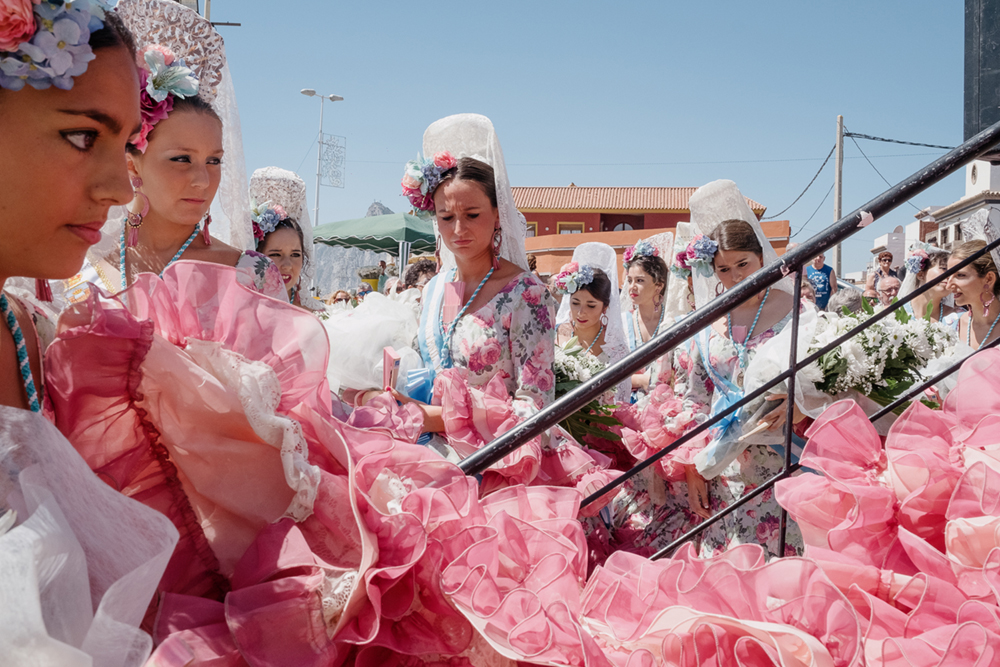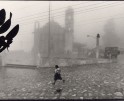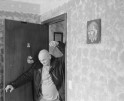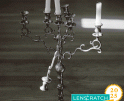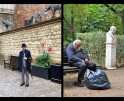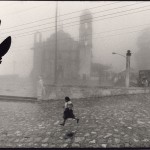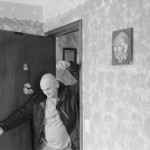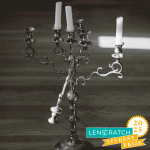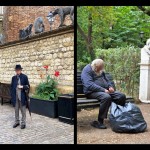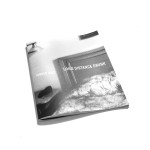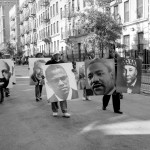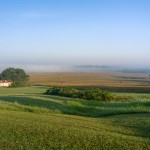European Street Photography Week: Guille Ibañez: TIERRA SANTA
Having lived in Spain many years ago, I am consistently intrigued by the impact of the Catholic church on the Spanish ethos. When I chanced upon the fascinating street photography of Guille Ibañez, I wanted to know more about what propelled him back to Spain to dive deeply into questions of origin and influence that profoundly influence his work. His project, Tierra Santa, is a journey of reflection and remembrance that is comparable to Proust’s madeleines. Ibañez’s work is full of symbolic gestures, cultural motifs, and humor frequently aimed at the Catholic church. Some of his images have a pagan quality that is juxtaposed with fiercely religious moments that create a sense of unease. So, I was most curious to discuss some of these issues with him to clarify and confirm some of my own suspicions about the work.
As Ibañez describes the project, ” It’s been 18 years since I left my homeland. This thought was the catalyst for a personal journey; photographing events and places all around Spain that bring people together and help define the country’s personality. Some of the scenes in ‘Tierra Santa’ are beautiful, joyful and full of color, while others feel rawer and darker. All of them recall a collective past that has defined the country’s identity for centuries. There are implicit themes here; my search for a sense of belonging, which mirrors that of the people I photograph; the quest for faith, which is often depicted in a very rich iconography and a sense of regional pride. Ultimately, this is a personal endeavor to reconnect with roots that are gradually eroding.”
Born in Madrid (1977) but drawn to Manchester, England, where he now lives, Guille Ibañez is a photographer whose work focuses on culture, tradition, and human interaction. Originally trained as a cinematographer, he still combines professional film and video work with his passion for photography. The tension between the moving and the still image goes to the heart of his work, and his pictures are often compared with frames from a film.
His discovery of photography began relatively recently with street photography. However, he quickly realized that photography was about more than just capturing isolated moments and that the real power of the camera was as a means of exploring human behaviors and stories and as a tool to connect and interact with the world and the people around him.
Guille develops long term projects mostly in his home country of Spain, but he also works within the UK and Asia. Religion and human faith play a major part in his work which has been part of many festivals around Europe and America. He has been a finalist at prestigious festivals such as MIFA (Moscow International Foto) and BSPF (Brussels Street Photography Festival) and will soon publish a monograph of Tierra Santa after winning an Eyeshot competition.
Follow Guille Ibañez on Instagram: @guilleibanez_photo
Michael Honegger: What prompted you to leave Spain for the United Kingdom? And what inspired you to return to Spain and capture it through your lens?
Guille Ibañez: Originally, I just wanted to have an experience living abroad. I was quite young at the time, but one thing led to another, and I ended up staying in the UK. Nearly 10 years ago, I was having a quick break visiting my parents at their home in Galapagar (Madrid). It was a June day; the Corpus Christi celebration and the locals were busy decorating the town for the procession happening later on that afternoon. I don’t know if it was the colours or the lively atmosphere or both, but I decided to document the place and the situation. I was in what is called ‘the zone’.
Coincidentally, I had just returned from photographing in Myanmar, which as amazing and photogenic as the place is, was a very unfamiliar place for me; so, the contrast of photographing in my hometown felt strangely comfortable. I guess there was something I could relate to in the way that those people gathered to celebrate a common past and a common set of traditions that had survived for hundreds, maybe thousands of years. Even though I’m not a religious person, these celebrations somehow transcended the religious aspect of it to go further beyond to a very human place. There was something unique in the way I could communicate and engage with those people.
MH: Leaving one’s homeland and then returning to document it is quite a unique narrative. How has your perspective changed from the time you left to now?
GI: In many ways, leaving one’s homeland can feel like ‘treason’ and it is not uncommon to feel like you have betrayed your family, culture, etc. However, travelling back to photograph has given me a unique insight into the lives of people with whom I share culture and roots. In many ways I feel very distracted from that culture but then in so many other ways I can still feel it is mine. Let’s just say that being an observer of your own culture and photographing it says more about you than the people you are photographing.
MH: Your portfolio features a blend of religious imagery with a touch of humour. Could you share your thoughts on the significance of this fusion in your work?
GI: I went to a strict Catholic school for 12 years surrounded by religious symbols and influences as a post-Franco child in Spain. Priests and the Bible were a definite part of my life during that period and the powerful imagery of the church becomes ingrained in you. It lives with you always. At the time I hated it, but one does not shed it lightly.
I know realize its importance in bringing people together to foster community. I am interested in the theatre of religion as I take these images. It is performance that goes beyond religion in terms of cultural heritage. Some of these ancient rituals precede the Christian era in Spain and are pagan in scope.
MH: The concept of “home” can be complex, especially after leaving and then returning. How does your photography explore the concept of home, both from a personal and a larger cultural perspective?
GI: One aspect that becomes clearer with every visit I make to my homeland is that rural Spain is disappearing in a serious way. Once you leave Madrid, Castilla is a wasteland. Ancient rituals and celebrations are slowly disappearing or falling victim to the onslaught of tourism. Home has changed dramatically in the years since I left. Rural villages are abandoned, or rural homes are converted to summer getaways for those in the cities. The ancient festivals are falling victim to economic tourism so one must be vigilant to protect what remains.
MH: Street photography can sometimes be invasive or raise ethical questions. How do you navigate these potential challenges, especially when capturing candid moments with religious undertones?
GI: I do not have problems with these issues because I always try to relate to the people I am photographing. When I arrive in a town for a festival or other events, I normally head to a local café or bar to meet local people and discuss what is happening. I also try to make connections with people with my camera in hand. So far, it has not been much of a problem for me.
MH: I noticed that you are a member of the Observe Street Photography Collective. How did this come about and what are the advantages of membership?
GI: Unfortunately, the Observe Collective has faded away over the past few years. In its prime it was a great way to introduce your work and to find a way to be accepted in a photographic community. Observe evolved out of a Flicker group and it allowed members to achieve recognition in a small way.
MH: What is next on the horizon for your image making?
GI: My new work is more focussed on landscape photography in the style of Stephen Shore, Mark Power, and the new topographic movement. I have moved into large format photography with a new urge to discover where I live here in Manchester. I have been focussing on social stories involving “The Big Ditch”, Manchester’s old shipping canal. This includes touching upon the industrial landscapes and the decline of northern England and Wales with their quarries and old mines.
For the last few years, I have also been exploring 3D virtual worlds with photo-realistic CDI and exploring ways to combine photography with virtual reality ideas.
Posts on Lenscratch may not be reproduced without the permission of the Lenscratch staff and the photographer.
Recommended
-
Suzanne Theodora White in Conversation with Frazier KingSeptember 10th, 2025
-
Jake Corcoran in Conversation With Douglas BreaultAugust 10th, 2025
-
Student Prize 2025: Top 25 to WatchJuly 20th, 2025
-
MOPD Reviews: Paul Stein: Nothing Is RevealedJuly 2nd, 2025
-
Jordan Gale: Long Distance DrunkFebruary 13th, 2025

